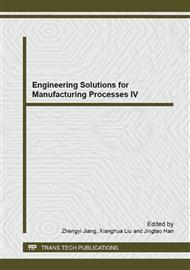p.726
p.732
p.737
p.741
p.745
p.749
p.755
p.761
p.766
An Automatic Paperless Velocity Measuring and Recording System
Abstract:
Automatic monitoring of hydrologic properties such as water velocity at short-time intervals is critical for understanding watershed eco-hydrological processes. This can also be used to study the laws of stream flows and interactions ecological process. The advent of modern electronic technology (and the near-perfection of especially sensor and data collection technologies), has made it possible to use automatic monitoring systems to continuously measure hydrologic properties at short-time intervals. This paper introduces one such paperless flow velocity measuring/recoding system. The system uses a photoelectric sensor that is mainly comprised of photoelectric velocity sensor and pulse recorder. The system uses propellers (with reflective panels and photoemission cells) to transform flow velocities into optical pulse signals. It also uses photosensitive tubes to transform optical pulse signals into electric pulse signals. The electric pulse counts (generated in unit time) are recorded via pulse recorders. This therefore accomplishes automatic monitoring and continuous recording of fluid flow velocity.
Info:
Periodical:
Pages:
745-748
Citation:
Online since:
February 2014
Authors:
Price:
Сopyright:
© 2014 Trans Tech Publications Ltd. All Rights Reserved
Share:
Citation:


